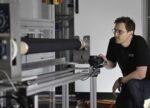Fine Food Australia returns in September
Visitor registration is now open for Australia’s largest food B2B event for the foodservice and hospitality industry, Fine Food Australia. Fine Food Australia will return to Melbourne’s Convention and Exhibition Centre on Monday 2nd of September, spanning over four days until Thursday the 5th of September, 2024. As the trade event celebrates its 40th anniversary in 2024, the show is set to be more expansive than ever, already featuring more than 425+ Australian and international exhibitors representing the food industry, across categories including foodservice, hospitality, catering, bakery, retail, import, export, distribution, and manufacturing. With the show floor already 85% sold out, Fine Food is set to be sold out soon. Reflecting upon the event’s 40th Anniversary, Diversified Communications Managing Director, David Longman remarks “As we celebrate Fine Food Australia’s 40th year, we reflect on how it has evolved, embracing innovation, trends & challenges of the culinary industry here in Australia. From humble beginnings to a large-scale international trade event, this milestone symbolises not just longevity but resilience & adaptability of the Australian food industry. “Fine Food Australia is testament to the enduring spirit of culinary excellence and the platform’s role in shaping the future of food in Australia. With the unwavering commitment of the food industry, we look forward to honouring this journey and embracing the opportunities ahead as we continue to elevate the gastronomic experience for another 40 years and beyond.” Fine Food Australia Commercial Product Manager, Sinead Kavanagh, added “We are so excited to deliver Fine Food Australia 2024. With over 40 years of connections and stories to tell it’s going to be a huge edition where we celebrate the people and businesses in this incredible industry. We’re also excited to be launching two new features to the show that will enhance the experience for our visitors and help their businesses thrive, […]









